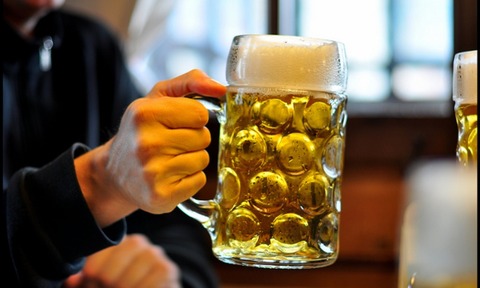Beer tastes good, scientists prove
9 Oct 2014

A team of scientists in Belgium has discovered why beer and wine tastes good to both humans and fruit flies.
Beer is produced through the soaking of a solid starch source in water and then fermenting the resulting liquid using yeast.
The yeasts used within the brewing process produce chemicals that closely mimic the aroma of certain fruits in order to attract flies that can transport the yeast cells to new niches, a study by scientists from Flanders Institute of Technology (FIT), the University of Leuvenand and the academic research initiative NERF suggests.
“We [have] already generated new hybrid yeasts that produce different aroma profiles
FIT professor Kevin Verstrepen
Interestingly, the study also revealed that these yeast chemicals are essential for the flavour of beverages such as beer and wine - which increases their appeal to humans.
FIT professor Kevin Verstrepen said: “The importance of yeast in beer brewing has long been underestimated. But recent research shows that the choice of a particular yeast strain or variety explains differences in taste between different beers and wines.
“In fact, yeasts may even be responsible for much of the ’terroir’, the connection between a particular growing area and wine flavour, which previously often was attributed to differences in the soil.”
Within fermentation, yeast cell microbes eat sugars and convert them into carbon dioxide gas and alcohol, but the Belgian research team says the role of yeast cells is far more complex than a simple conversion process.
The researchers claim that yeast cells have the capacity to produce several aroma compounds that are vital for the taste, flavour and overall quality of beer and wine.
Verstrepen’s research also includes the development of new yeast types.
“Part of my research team is dedicated to generate new, superior yeasts for the proaction of beer, wine, bread, chocolate and biofuels,” he said.
“We [have] already generated new hybrid yeasts that produce different aroma profiles, and some of these have been sold to companies and are now used for commercial production.”
Verstrepen also said his research team has engineered some genetically modified strains, some of which produce up to 100-fold the normal concentration of certain aroma compounds.
“In principle, we could also produce other flavours, for example by expressing genes from other organisms into yeast,” Verstrepen said, though he stressed it may not be a good idea at this moment since “most food production companies are not interested in genetically modified organisms”.
Although different yeasts produce different aroma compounds, the reason why yeast cells make specific volatile compounds is unknown, the researchers said.
“This ground-breaking study was only possible because we were able to combine the know-how of different research groups, with expertise ranging from yeast genetics to animal behaviour and neurobiology,” said Emre Yaksi, a neuroscientists at FIT and NERF and study researcher.

